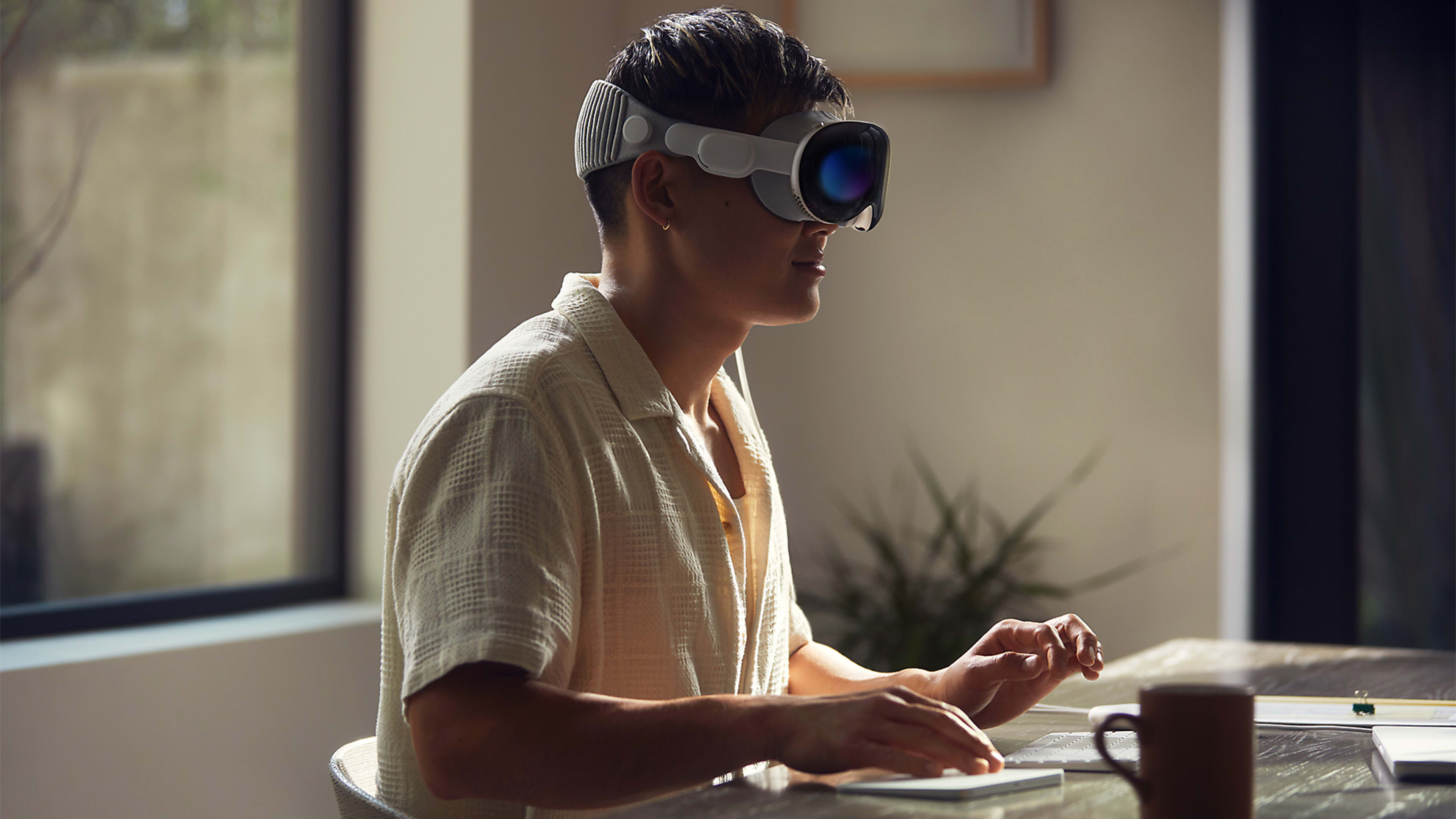Forward-thinking companies recognize that digital investment must go further than machines and materials. To gain a competitive edge, they must focus on employees too.
A majority (86%) of manufacturing executives believe that smart factory solutions will be the primary drivers of competitiveness in the next five years. But it’s not just machines that are getting smarter. It’s people too. Already manufacturers are anticipating that the industrial metaverse could lead to a 12% gain in labor productivity, a positive step to help address ongoing labor shortages.
And now, with the general availability of Apple Vision Pro, the industrial metaverse might suddenly take a huge leap forward. We have two advancing technologies that if used correctly will be game-changing for manufacturers and their workers.
A lot of the current hype has centered on consumers using the tech to seamlessly blend digital content with the physical world, but significant industry applications for such spatial computing technologies already exist.
Spatial computing solutions have to be more than just a cut-and-paste job. It’s much more than simply taking current iPad applications and making them available on the App Store for Apple Vision Pro. The new era of spatial computing requires intense redesign, reengineering, and a truly reimagined approach to the current technology used on the shop floor to achieve its full potential.
I have seen with our customers how company training programs have already been transformed with the help of visual work instructions. Multimedia, one-point lessons make it easier for workers to understand and retain critical information, which leads to better performance.
Now with Apple Vision Pro, video instructions can become more immersive and provide a more realistic experience as the device can be used to film instructions from a first-person point of view.
The benefits are twofold. Not only does this avoid the need for two people—a videographer and a trainer—when creating content, but the training video quality provides a more impactful experience.
3D CAD models can be uploaded at the plant, production line, workstation, and equipment level. When users watch a work instruction, they can have the 3D model open and available in a second window. This gives workers the opportunity to practice and the ability to operate the object or machine. Enhanced and immersive training experiences can be especially valuable when you want to provide instructions before a worker is on the factory floor—for example, during a new hire’s orientation, or when frontline workers are training for hazardous zones, or even training workers in advance of commissioning a new site or equipment.
Ensuring productivity and efficiency is a top priority for any manufacturing business, and that’s why employees must be given the tools and relevant information to help them perform tasks to their best ability. This is where the ability to make task execution and checklists hands-free plays a huge role. It can help improve efficiency and ensure workers have easy access to critical information and the ability to collaborate—all while getting the job done.
An associate can put on the device to perform a product changeover and have the checklist visible in a window as a reference. Then, as the steps are completed, the checklist can be filled in through speech to text. Instead of picking up a tablet to fill in the checklist once the steps are completed, it can be done in real time.
Augmented reality and virtual reality have been around for some time. Concerns about earlier devices have kept companies from investing heavily in development as headsets were deemed too clunky, unresponsive, of poor quality, and not adapted for manufacturers.
But Apple Vision Pro allows seamless transitions between fully immersive digital content and augmented physical reality. Game-changing features allow users to precisely manipulate physical objects using their eyes, hands, and voice.
The emergence of Apple Vision Pro transforms an intuitive experience by leveraging spatial computing and augmented reality. Add to this the power of a connected worker platform. From enhancing training to redefining task execution, a new era of frontline-worker efficiency is underway, opening up new frontiers for manufacturing businesses in productivity, operational efficiency, and worker safety.
Recognize your brand’s excellence by applying to this year’s Brands That Matter Awards before the final deadline, June 7.
Sign up for Brands That Matter notifications here.
